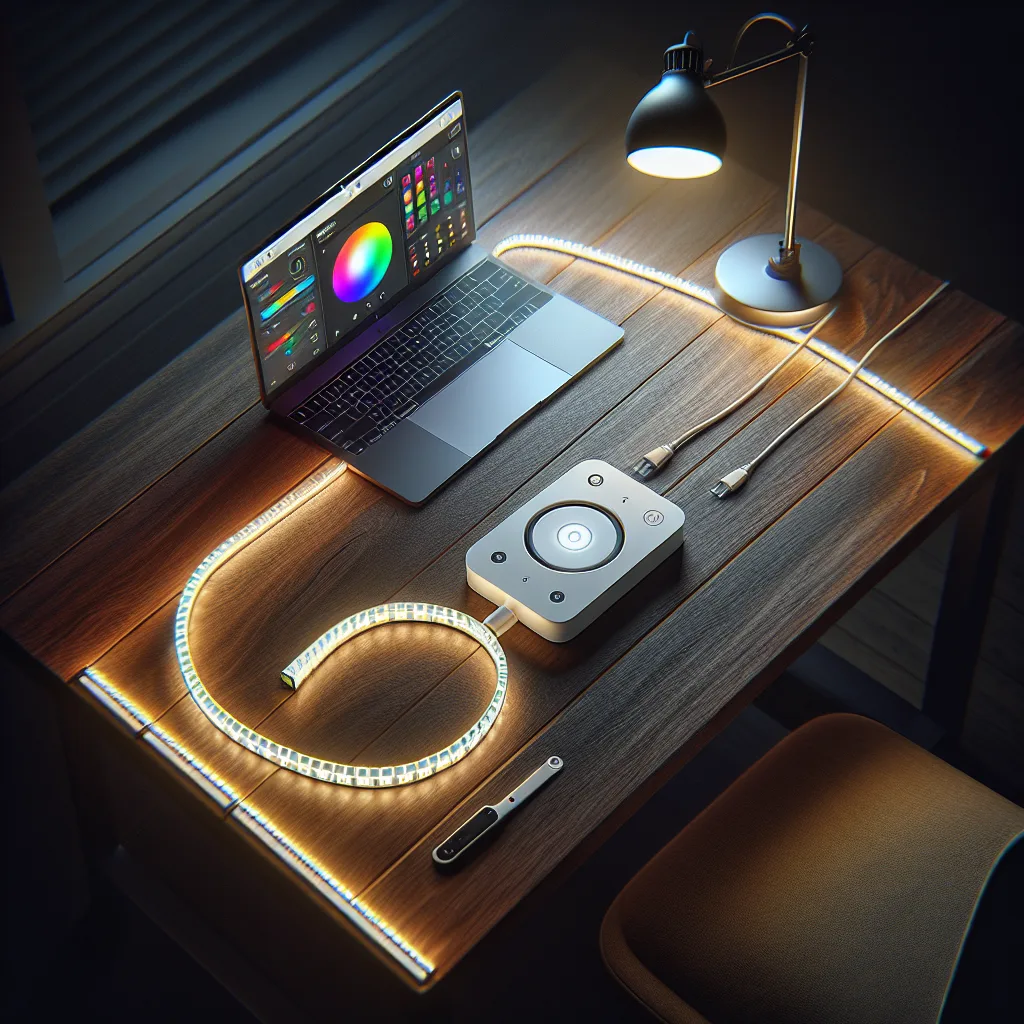Discover a budget-friendly way to build custom smart lighting using cheap Alibaba LED controllers and open-source firmware for Home Assistant. A DIY guide.
I love smart lighting. The ability to change the color and brightness of a room from my phone or with my voice feels like living in the future. What I don’t love is the price. A few bulbs or light strips from the big brands can easily cost hundreds of dollars.
So, I started wondering if there was a cheaper way. I’m pretty comfortable with tinkering, so my goal wasn’t just to find a bargain, but to find something I could truly customize and make my own. This led me down the rabbit hole of international shopping sites like Alibaba.
The $6 Experiment
After some digging, I found what I was looking for: a generic, unbranded WiFi LED strip controller. On paper, it was perfect. It was based on an ESP chip, which is a favorite in the DIY community, and it promised support for MQTT, a communication protocol that’s perfect for smart home hubs.
The best part? A single sample unit cost just $6, including shipping.
I figured, for six bucks, what did I have to lose? I placed the order and prepared to wait.
Seventeen days later, a small package arrived. Inside was a simple white plastic module. It had a micro-USB port for power, an IR sensor, a physical button for basic controls, and a connector for an LED strip. It was plain, unassuming, and exactly what I expected. The hardware felt solid enough for what it was.
Bringing It to Life with Open-Source Firmware
Here’s where the real fun began. The controller’s stock firmware was probably fine, but I wanted to unlock its full potential. The magic of these generic ESP-based devices is that you can often flash them with powerful, open-source firmware.
My weapon of choice was WLED. It’s an incredible piece of software for controlling addressable LED strips, packed with effects, and designed to integrate seamlessly with home automation platforms.
The process involved connecting the controller to my computer, firing up a simple flashing tool, and loading the WLED software onto the chip. It sounds technical, but the community has made it surprisingly straightforward. Within about 15 minutes, the generic controller was running a powerful, feature-rich firmware that I controlled.
The final step was connecting it to my smart home hub, Home Assistant. Because WLED has native Home Assistant integration, it was instantly recognized. No complex configuration, no fighting with settings. It just worked.
I connected an RGBW LED strip I had, and the result was stunning. The control was instantaneous—no lag at all. I could set any color, any brightness, and trigger wild effects, all from my central dashboard. The experiment was a massive success.
From One to Twenty
I was so impressed with the performance of my $6 controller that I decided to go all-in. I went back to the seller and ordered twenty more, this time at a bulk price that worked out to about $4 per unit. Now I have a stack of these little guys ready for any future project that comes to mind—under-cabinet lighting, accent lighting behind the TV, you name it.
But Let’s Be Honest: Is It Safe?
This is the big question, isn’t it? When you buy ultra-cheap, unbranded electronics from overseas, you’re making a trade-off.
These devices don’t come with the fancy FCC or CE certifications you see on products sold in big box stores. That means they haven’t undergone the rigorous independent testing for safety and interference that branded products do. Power safety is a real consideration, especially with anything you’re plugging into the wall. I’m powering mine with a reliable, certified USB power adapter, not a cheap, unknown one.
There’s also the question of long-term reliability. Will the firmware I installed still be compatible in five years? Will the hardware itself hold up? Honestly, it’s hard to say.
For me, this is a calculated risk I’m willing to take for a hobby project. I’m comfortable with the technology and I understand the potential pitfalls. It’s an amazing solution if you’re a DIYer who likes to tinker and wants ultimate control for a low price.
But it’s not a solution I’d recommend to a friend who just wants to plug something in and have it work. For that, the premium brands still offer peace of mind and simplicity that’s worth the cost. For the rest of us? The adventure is half the fun.
